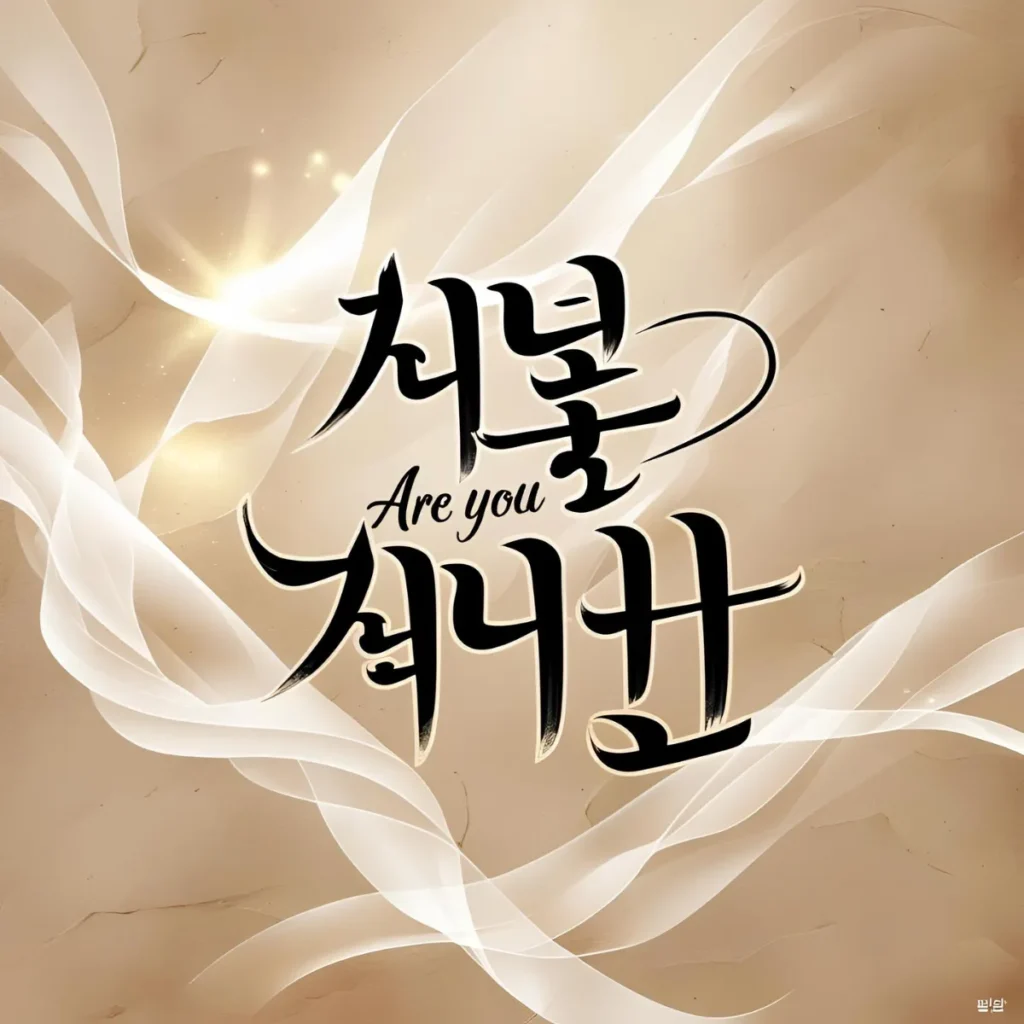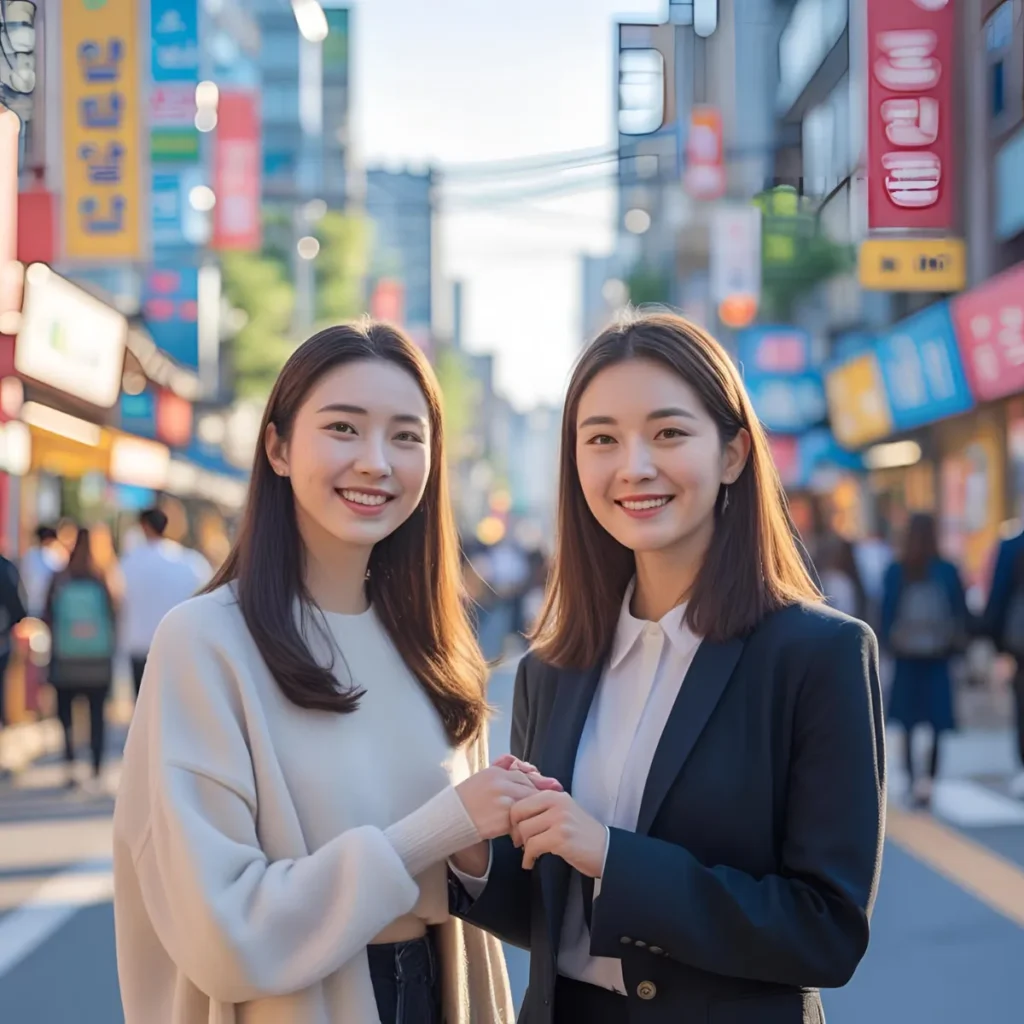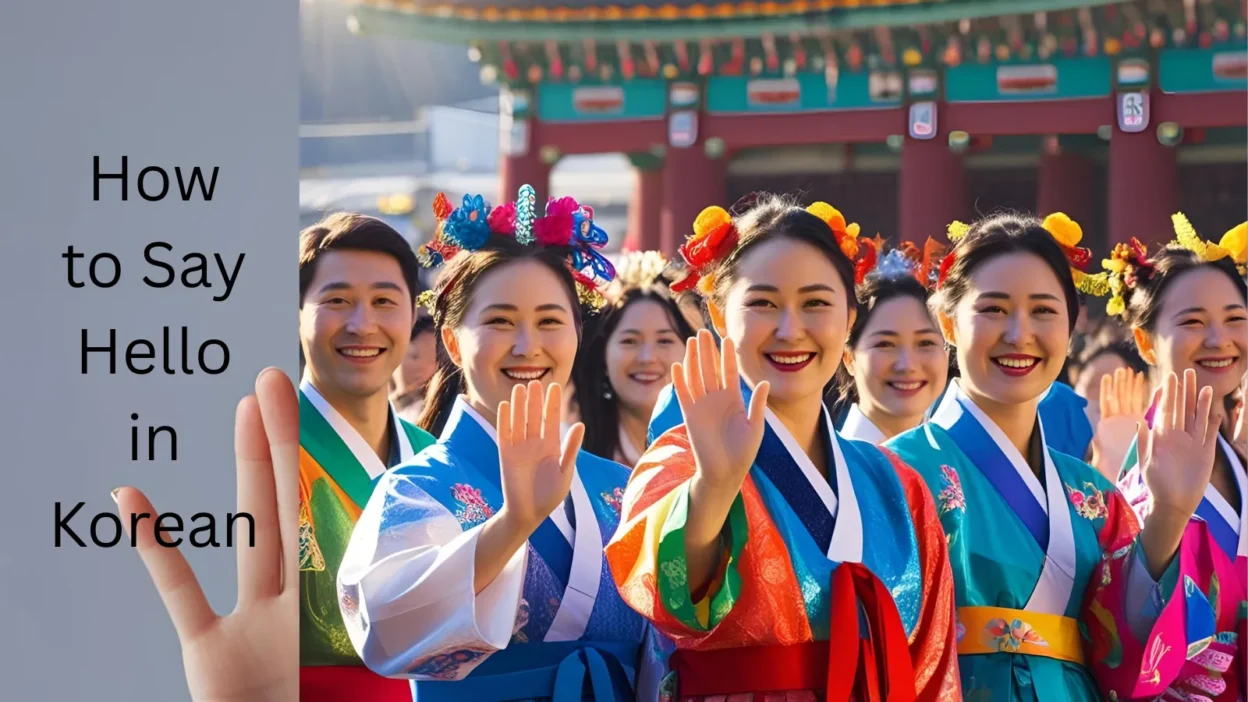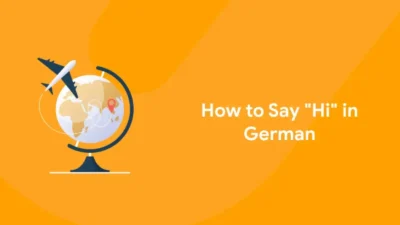Learning how to say hello in Korean is one of the first steps to speaking the language and connecting with Korean culture. The most common and respectful greeting is “안녕하세요” (Annyeonghaseyo), but there are many fun and casual ways to say hello depending on who you’re talking to.
In this guide, you’ll discover 15 polite and playful Korean greetings with examples, so you’ll always know the right way to say hello — whether you’re meeting a friend, addressing a teacher, or starting a K-drama wallow. 🇰🇷👋
We’ll also break down pronunciation, meaning, and when to use each phrase naturally.
Let’s get started and say hello the Korean way!
1. 안녕하세요 (Annyeonghaseyo) – Hello (Polite)
Origin:
Derived from the word 안녕 (annyeong) meaning “peace” or “well-being”, with the polite suffix -하세요.
Example:
👤 User A: 안녕하세요! 처음 뵙겠습니다. (Hello! Nice to meet you.)
👤 User B: 안녕하세요! 만나서 반가워요. (Hello! Glad to meet you.)
Use: Standard polite greeting; safe for most situations.
2. 안녕 (Annyeong) – Hi / Hello (Casual)

Origin:
Same root as above, but without the honorific. Used only with close friends or younger people.
Example:
👤 User A: 안녕! 오랜만이야. (Hey! Long time no see.)
👤 User B: 안녕! 진짜 오랜만이다! (Hey! Yeah, it really has been a while!)
Use: Informal; used with friends, family, or children.
Read Also: How to Say I Love You in Spanish
3. 안녕하십니까? (Annyeonghasimnikka?) – Hello (Formal)
Origin:
Highly formal version, often used in business settings, presentations, or when addressing large groups.
Example:
👤 User A: 안녕하십니까? 김철수입니다. (Hello. I’m Kim Chul-soo.)
👤 User B: 안녕하십니까? 반갑습니다. (Hello. Nice to meet you.)
Use: Very formal; used in news, speeches, or professional events.
4. 여보세요 (Yeoboseyo) – Hello (On the phone)
Origin:
A phone-specific greeting, not used face-to-face. Comes from old Korean expressions used to get someone’s attention.
Example:
👤 User A: 여보세요? 거기 누구세요? (Hello? Who is this?)
👤 User B: 여보세요, 민수예요. (Hello, it’s Minsu.)
Use: Only on the phone.
5. 오랜만이에요 (Oraenmanieyo) – Long time no see
Origin:
Literally means “It’s been a long time.” A warm way to greet someone you haven’t seen in a while.
Example:
👤 User A: 오랜만이에요! 잘 지내셨어요? (Long time no see! Have you been well?)
👤 User B: 네, 오랜만이에요! 잘 지냈어요. (Yes, it has been! I’ve been good.)
Use: Friendly and polite.
Read Also: How to Say Thank You in Japanese: 15 Beautiful Ways to Express
6. 안뇽 (An-nyong) – Hey (Super casual/slang)
Origin:
A shortened, cuter version of “안녕,” often used in texts, social media, or between young people.
Example:
👤 User A: 안뇽ㅋㅋ 뭐 해? (Hey~ lol what are you doing?)
👤 User B: 안뇽ㅋㅋ 그냥 넷플릭스 보고 있어. (Hey! Just watching Netflix.)
Use: Super casual; digital/text slang.
7. 잘 지냈어요? (Jal jinaesseoyo?) – Have you been well?
Origin:
Literally asks, “Have you spent your time well?” Often used when you reunite with someone.
Example:
👤 User A: 잘 지냈어요? (Have you been well?)
👤 User B: 네, 잘 지냈어요. (Yes, I have.)
Use: Friendly and polite catch-up greeting.
8. 안녕하신가요? (Annyeonghasingayo?) – Are you well? (Elegant/formal)

Origin:
A soft, poetic version used by older people or in writing, songs, or dramas.
Example:
👤 User A: 오랜만입니다. 안녕하신가요? (It’s been a while. Are you doing well?)
👤 User B: 네, 고맙습니다. (Yes, thank you.)
Use: Formal, gentle; often heard in historical dramas or poetic writing.
Read Also: How to Say I Love You in Japanese: 15 Romantic & Cultural Ways
9. 좋은 아침이에요 (Joeun achimieyo) – Good morning
Origin:
Direct translation of “Good morning.” Not native to Korean conversation but gaining use due to English influence.
Example:
👤 User A: 좋은 아침이에요! (Good morning!)
👤 User B: 좋은 아침입니다! (Good morning!)
Use: Modern; more common in casual workplaces or learning environments.
10. 안녕? 누구세요? (Annyeong? Nuguseyo?) – Hello? Who is this?
Origin:
Often used in a slightly suspicious or curious tone, when answering the door or an unknown call.
Example:
👤 User A: 안녕? 누구세요? (Hello? Who’s there?)
👤 User B: 아, 택배입니다! (Ah, it’s your delivery!)
Use: Casual greeting with questioning tone.
Read Also: How to Say Hello in Japanese: 15 Culturally Rich Greetings
11. 하이 (Hai) – Hi (Korean-English slang)
Origin:
Borrowed from English “hi”, used mostly by teens or in texts and pop culture.
Example:
👤 User A: 하이~ 잘 지냈어? (Hi~ How’ve you been?)
👤 User B: 하이하이~ 응 잘 지냈지! (Hihi~ Yeah, been good!)
Use: Playful, cute, and casual.
12. 반갑습니다 (Bangapseumnida) – Nice to meet you

Origin:
Used when greeting someone for the first time. It means “I’m glad to meet you.”
Example:
👤 User A: 처음 뵙겠습니다. 반갑습니다. (Nice to meet you for the first time.)
👤 User B: 저도 반갑습니다. (Nice to meet you, too.)
Use: Formal and respectful.
13. 다녀오셨어요? (Danyeo-osyeosseoyo?) – Welcome back!
Origin:
A traditional way of greeting someone returning home or from somewhere else.
Example:
👤 User A: 다녀오셨어요, 아버지? (You’re back, Dad?)
👤 User B: 응, 다녀왔다. (Yes, I’m back.)
Use: Respectful; used at home.
14. 잘 있었어? (Jal isseosseo?) – Have you been okay? (Casual)
Origin:
Another way to check in after a while; used with friends or same-aged people.
Example:
👤 User A: 잘 있었어? (You been okay?)
👤 User B: 응, 너는? (Yeah, and you?)
Use: Friendly and casual.
15. 다녀오겠습니다 (Danyeo-ogesseumnida) – I’m heading out / Hello (on departure)
Origin:
A Korean cultural greeting said when leaving the house, meaning “I’ll go and return.”
Example:
👤 User A: 다녀오겠습니다! (I’m off!)
👤 User B: 다녀오세요~ (Take care!)
Use: Common Korean home etiquette.
Conclusion:
Now you know how to say hello in Korean using a mix of polite, casual, and fun greetings perfect for any situation. From the respectful “안녕하세요” to the friendly “안녕!”, each phrase helps you connect more naturally with Korean speakers.
Understanding when and how to use these greetings shows cultural awareness and makes your conversations more meaningful.
Keep practicing your favorite phrases to build confidence and fluency.
With the right hello, you’re one step closer to speaking Korean like a native!



